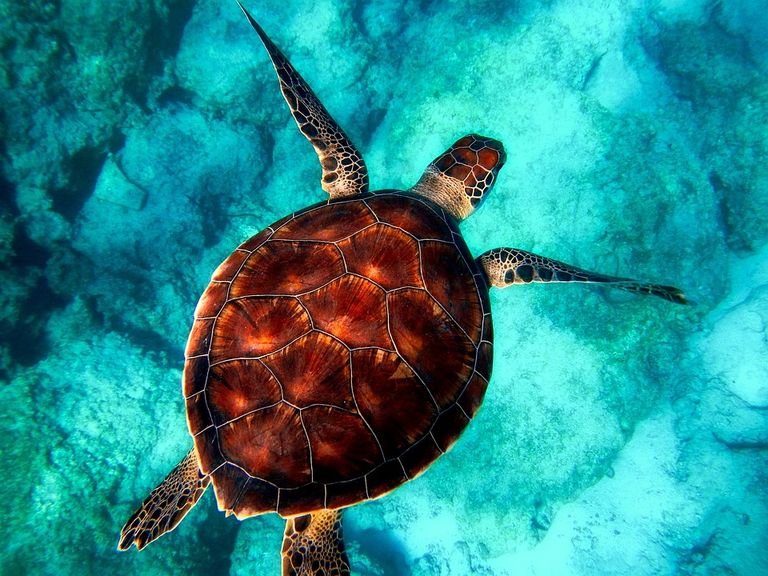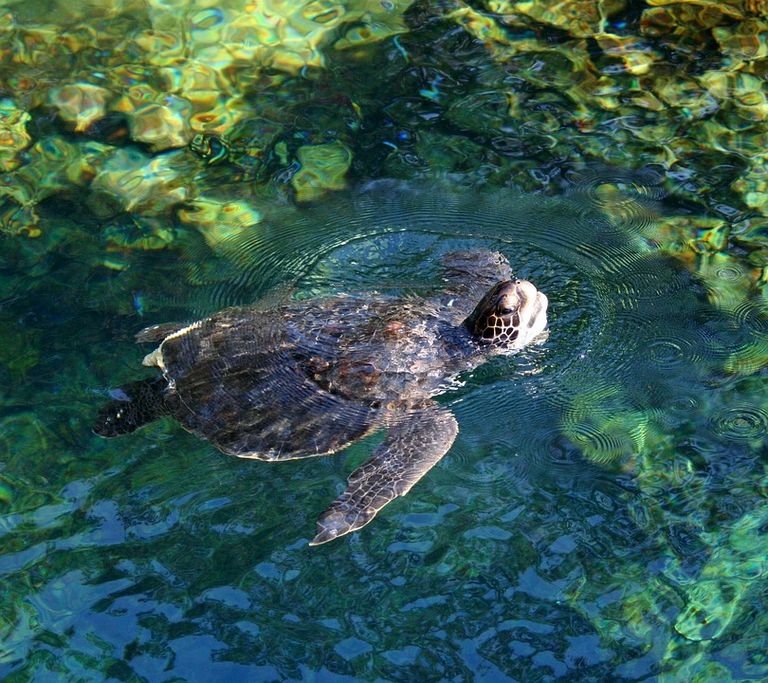
Sea Turtles are one of earth’s most ancient creatures. Depending on the species of sea turtles the color range can be olive-green, yellow, greenish-brown, reddish-brown, or black. The green sea turtle gets its name from the color of its body fat. Unlike other turtles, Sea turtles can’t retract their legs and heads into their shells.
The seven species of Sea Turtles that can be found today have been around for 110 million years, since the age of Dinosaurs, also known as the late Jurassic period. The Sea turtles have overcome many challenges and they are still facing more.
Sea turtles, sometimes known as Marine Turtles, are reptiles of the order Testudines and the Suborder Cryptodira.
The beginning
The Sea turtles life cycle starts when a female lays leathery ping pong sized eggs, into a nesting pit that the mum dug high up on the beach. The mother lays 50 to 200 eggs.
Roughly around 1 month after the eggs have been laid they hatch but only 80% will hatch. The other 20% will never see the light of day again. The sea turtle hatch lings will emerge from the shell they smashed and tunnel their way out of the pit the mother made. Females may lay one to eight times a season, and they also alternate from mating in the water and laying eggs on land.
The young hatch lings will begin their journey by scatting down the beach to the ferocious waves to begin their life cycle. On the way there they face many predators like crabs, birds, water tides etc. When they reach the surf they trade land predators for sea predators, such as sharks, fish and killer whales.

Only 50% of the young will live, the other 50% will DIE!
When the sea turtles are in the water they may settle in flotsam , jetsam ,also in seaweed. Some of the sea turtle offspring will start to eat themselves.

Humans interfering
After 2 decades of age the Sea turtles are old enough to breed. When the turtles are able to breed only less than 10% that started on the beach are left.
Human interference is also a problem for the sea turtles. The human interference's include pollution, trash, long line fishing, marine oil leaks and a plenty more things.
After adding human interference, only less than 1% or just 1% will survive.
After years of roaming the ocean the sea turtles are well enough mature to mate. The females will go to the exact beach where they started their journey and lay her eggs so that those little sea turtles can repeat the life cycle that has been going on for centuries.

Sea turtles are magnificent creatures. They have survived many challenges and hopefully will survive more!